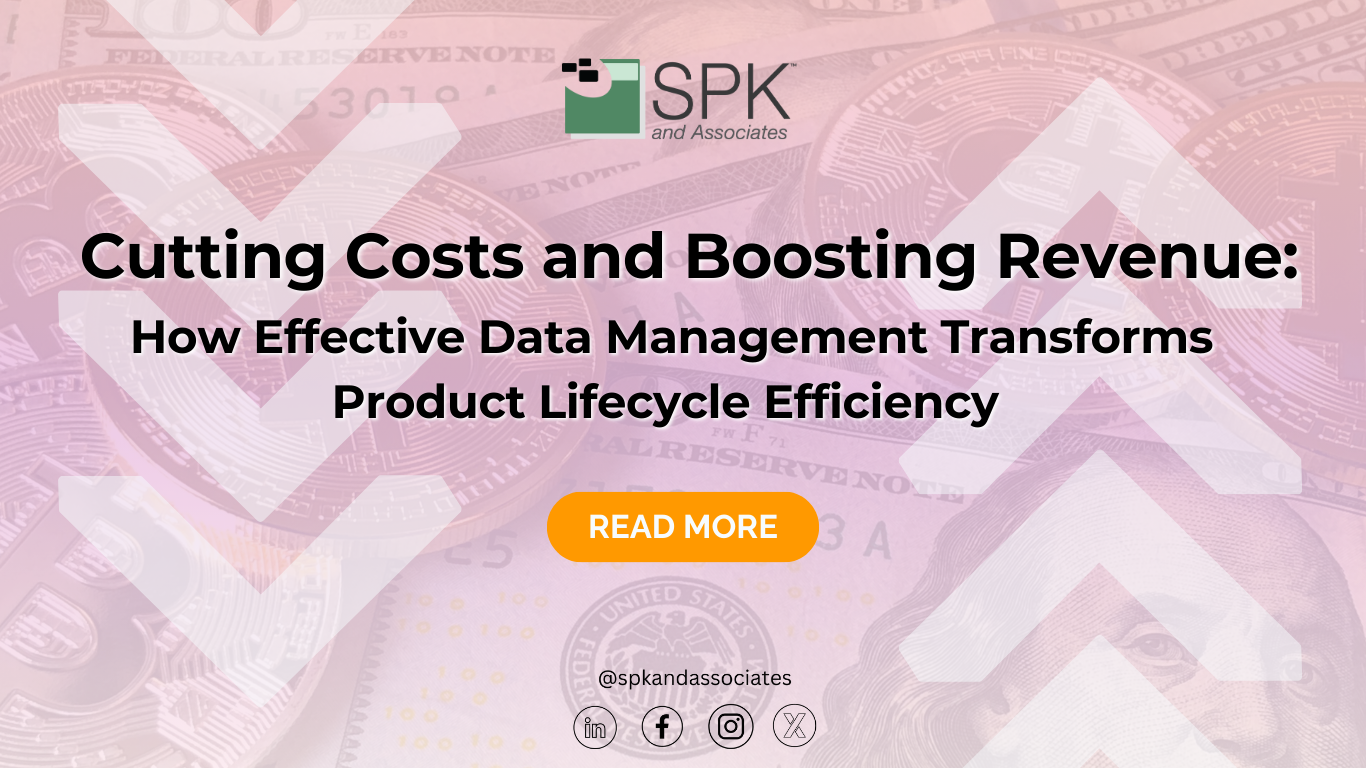According to Deloitte, 40% of the average engineer’s time is spent looking for information. This issue could be resolved with effective data management. Deciding which platform to store your organization’s data in can be difficult, as there are many great options on the market. Let’s dive into the differences between PLM and ERP systems for data management and explore the benefits of each.
Common Data Management Issues
The most common issue when managing data is a lack of organization. Not only is a large chunk of time often wasted searching for information, but 46% of workers claim despite searching they cannot find what they are looking for. Furthermore, 50% of decisions made by engineers are made with incomplete, inadequate, or inconsistent data. To prevent these issues from occurring, organizations should consider managing their data in a system that provides a central depository as the universal source of truth.
Effective Data Management in an ERP System
Many organizations manage their data within an ERP system due to its data-reporting capabilities. ERP can hold a lot of information for many stakeholders at once, typically impacting a wider range of individuals than PLM systems. ERP systems consolidate data from various departments into a single database, acting as a single source of truth. This ensures data is consistent and accurate. Additionally, ERP systems offer improved data accessibility and collaboration. Their real-time data updates and robust analytics tools offer timely and accurate data reporting and analysis.

ERPs can automate repetitive tasks such as data entry, reporting, and inventory management, enhancing efficiency. In addition to this, ERP systems are scalable, allowing organizations to increase data volume as their business grows. They also include features to ensure compliance with industry standards. Additionally, they offer improved security by including data encryption and access controls.

Effective Data Management in a PLM System
The main benefit of utilizing a PLM system for data management is its ability to manage information during every step of the product lifecycle. PLM systems are built to track information from conception to deployment and eventual end of life. Managing data within PLM systems provides continuous access to a single source of information, fostering better collaboration among cross-functional teams. Additionally, when compared to ERP systems, PLM systems support a wider range of BOM structures. This range allows for more flexible product configurations and improved traceability.
PLM systems also provide tools for change, configuration, and project management, ensuring accurate and real-time updates. Their end-to-end visibility aids in better decision-making and allows for more effective resource allocation. Furthermore, PLM systems help ensure compliance with industry standards by maintaining detailed records and documentation. Lastly, PLM systems optimize workflows and streamline product development processes, improving efficiency and reducing time-to-market.
Downfalls of PLM and ERP Systems for Data Management
Now that we have covered the benefits of each system, let’s dive into their downfalls. First, let’s cover costs. While both systems can have high implementation costs, ERP systems often have costly maintenance to add to the initial investment. Additional PLM system costs are typically due to integrations, however, customizing either system to fit business needs is expensive.
In addition to the costs, both systems cost businesses time, taking months or even years to fully implement. This is because the data migration process is not simple. Migrating data from legacy systems to an ERP or PLM requires intense data cleansing to ensure accuracy. Utilizing an ERP or PLM can also lead organizations to become dependent on the vendor for support or updates. Each vendor has specific constraints that limit adaptability, which is why it’s important to research before selecting one.
Why We Recommend PLM
Although there are situations where ERP systems can and should be utilized alone, many manufacturing companies could benefit from managing data within a PLM. Many organizations that successfully utilize ERP systems tend to do some processes outside of ERP due to the complexity of iterative engineering data. Processes like design engineering are instead often home to PLM. PLM allows all processes to be managed concurrently, in the same location. The systems prevent fragmented and ineffective management by having and maintaining a digital thread between the design and manufacturing stages. ERP solutions typically force users to wait until product designs are finalized before information is shared downstream. Integrating a digital thread for product and manufacturing processes from PLM to ERP links together the critical upstream and downstream processes, allowing sharing at any stage in the development process.

Utilizing PTC Windchill
For all these reasons, we recommend integrating ERP with PLM or fully managing data with a PLM system. Our top choice of PLM system is PTC Windchill. It offers easy access to consistent and accurate data, allowing users to easily find what they need. Users can be confident in their decisions, knowing the data they use is current.

Implementing PLM for Data Management
When organizations take advantage of a PLM system’s full range of features, they resolve the issues of losing data and making decisions with incorrect information. Instead, PLM systems ensure the ability to quickly locate adequate data. If you would like to discover more about PLM systems like Windchill, explore our resources. If you have questions or would like to implement PLM, contact our experts to get started today.







